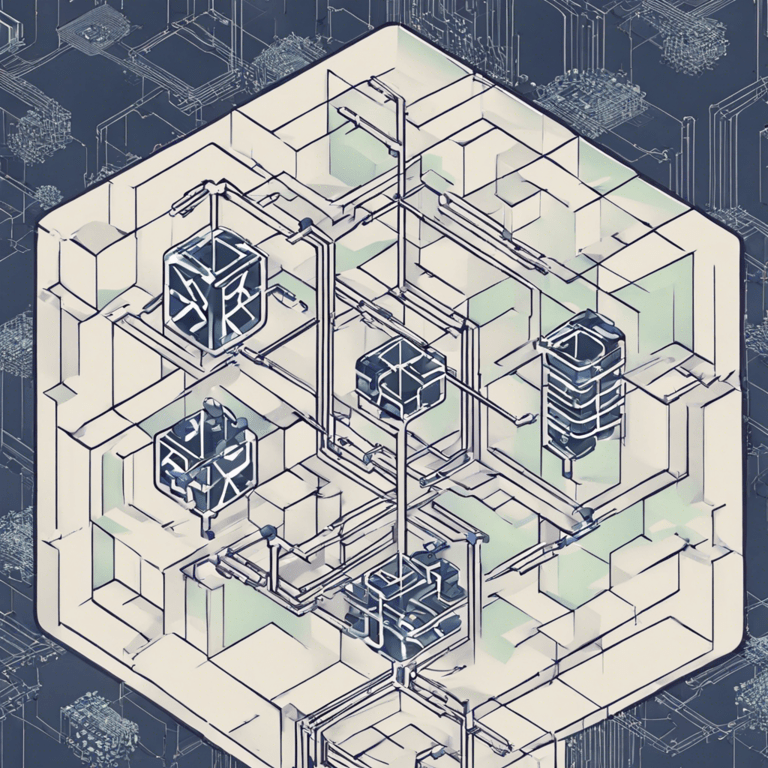Blockchain technology is a game changer that has taken the globe by storm. It is the underlying technology behind cryptocurrencies like Bitcoin and Ethereum, and it is rapidly gaining traction in a wide range of industries.

What is Blockchain Technology?
Blockchain technology is a decentralized, distributed ledger that records all transactions across a peer-to-peer network. This means that there is no central authority or intermediary controlling the data. Instead, the data is distributed across a network of computers, making it highly secure and tamper-proof.
Blockchain technology is often described as a “trustless system” because it does not rely on any third-party to ensure the integrity of the data. Instead, the network of computers collaboratively verifies and validates each transaction, ensuring that the data is accurate and cannot be tampered with.
How Does Blockchain Technology Work?
Blockchain technology works by creating a chain of blocks, where each block contains a record of transactions. Each block is linked to the previous block, creating an immutable record of all transactions that have ever occurred on the network.
When a new transaction occurs, it is broadcast to the network of computers. Each computer then verifies the transaction and adds it to its local copy of the blockchain. Once a majority of computers have agreed on the validity of the transaction, it is added to the next block in the chain.
This process of verifying and adding transactions is known as “mining.” Miners use powerful computers to solve complex mathematical puzzles, and the first miner to solve the puzzle is rewarded with a cryptocurrency token. Mining is what keeps the blockchain network secure and ensures that all transactions are valid.
Applications of Blockchain Technology
Blockchain technology has the potential to revolutionize a wide range of industries, including finance, supply chain management, healthcare, and government. Here are some of the most promising blockchain applications:
- Finance: Blockchain technology can be used to create secure and transparent financial systems. For example, it can be used to create a new type of digital currency that is not controlled by any government or financial institution. It can also be used to create a secure and transparent way to track and manage financial transactions.
- Supply Chain Management: Blockchain technology has the potential to make supply chains more efficient and transparent. For example, it can be used to track the movement of goods from the point of origin to the point of sale. This can help to reduce fraud and counterfeiting, and it can also help to improve the quality of products.
- Healthcare: Blockchain technology can be used to create a secure and transparent way to store and share medical records. This can help to improve healthcare delivery accuracy and efficiency. It can also be used to create a secure and transparent way to track the movement of pharmaceuticals.
- Government: Blockchain technology can be used to create a more efficient and transparent government. For example, it can be used to create a secure and transparent way to track the voting process. It can also be used to create a secure and transparent way to manage government records.
- Internet of Things (IoT): Blockchain technology can be used to create a more secure and efficient way to manage IoT devices. For example, it can be used to create a secure and transparent way to store and share IoT device data. It can also be used to create a secure and transparent way to track the movement of IoT devices.
Conclusion
Blockchain technology is a game-changing breakthrough with the potential to alter numerous industries. It is still a relatively new technology, but it has already made a significant impact on the world. As technology continues to develop, we can expect to see even more innovative applications emerge in the years to come.
Disclaimer
FAQ
DeFI stands for decentralized finance, offering open and accessible financial systems built on blockchain technology.
Yield farming involves earning interest by lending or staking cryptocurrencies.
Layer 1 blockchains are the primary networks (e.g., Ethereum), while layer 2 blockchains scale and improve performance on top of them.


